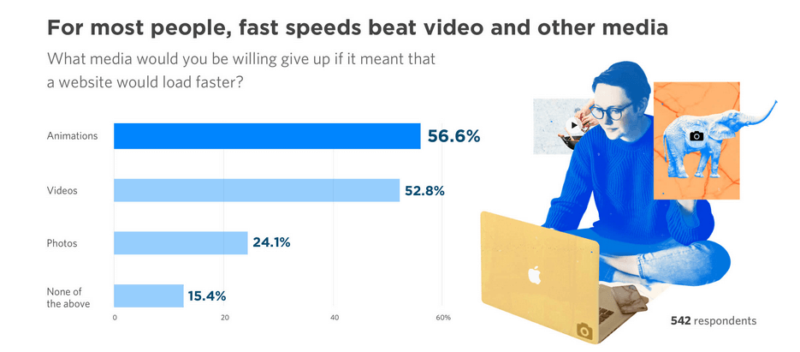Slow pages hurt conversions, but marketers aren’t in a hurry to fix them
Faster-loading sites was at the bottom of a list of marketing priorities according to an Unbounce survey.
Load time matters. Beyond the fact that Google has made page speed a mobile ranking factor, consumer behaviors and perceptions are significantly impacted by page load times.
That’s according to a new report from Unbounce. Yet marketers don’t seem to be prioritizing speeding up their sites.
At an industry conference last year, Unbounce tested 188 company sites and landing pages using Google’s “Test My Site” tool. The company says only 15 percent of pages met Google’s five seconds or less criteria (on a 3G connection) for mobile page-load times. And nearly 40 percent took at least 11 seconds to load.

The company then conducted two parallel surveys of consumers and marketers to understand their respective attitudes toward page speed. Nearly 75 percent of consumers surveyed said they’d wait four or more seconds for a mobile site to load. However, Google data show that most people abandon sites after three seconds if content hasn’t loaded.
Trading features for speed. The majority of survey respondents indicated that slow-loading sites would negatively affect their willingness to buy and even return to the particular site. Surprisingly, women were more impatient than men in this regard.

Interestingly a majority of consumers said they wanted faster-loading sites even it meant giving up animations, video and images. The good news for brands and publishers is that most consumers were more inclined to blame their ISP (50.5 percent) than the site itself (34.2 percent).
In Unbounce’s parallel marketer survey, 81 percent of respondents said slow load times impacted their conversion rates. Yet the data also show that improving page speed is at the bottom of the priority list. This, despite the fact that most marketer-respondents aspired to a two to three second load time.

For those actively trying to improve page speed, the following were the tactics and tools utilized (in rank order):
- Optimizing images and video files
- Improving caching and hosting
- Running speed audits, using Google Lighthouse or other tools.
- Reducing dependence on JavaScript and CSS.
- Building Accelerated Mobile Pages (AMP)
- Using a Content Delivery Network
It’s worth calling out that 22 percent of the survey sample were marketers using AMP in any capacity.
Why marketers should care. Marketers are consumers too and experience poor mobile site experiences routinely. But the fact that improving load times was a low priority item implies that the multi-faceted nature of improving site performance is an inhibitor against taking action. In addition, most marketers probably don’t know the actual opportunity cost of not improving site speed. This survey hints at what that might be.
Opinions expressed in this article are those of the guest author and not necessarily MarTech. Staff authors are listed here.
Related stories
